Copyright © 2006 by The Mc. Graw-Hill

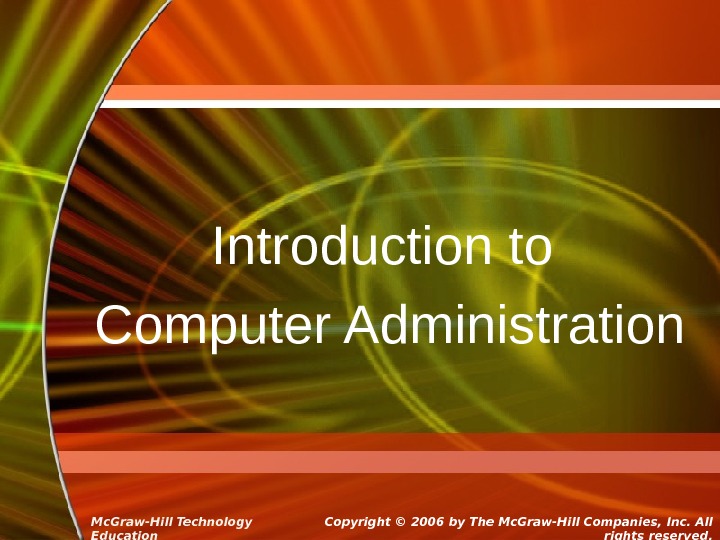
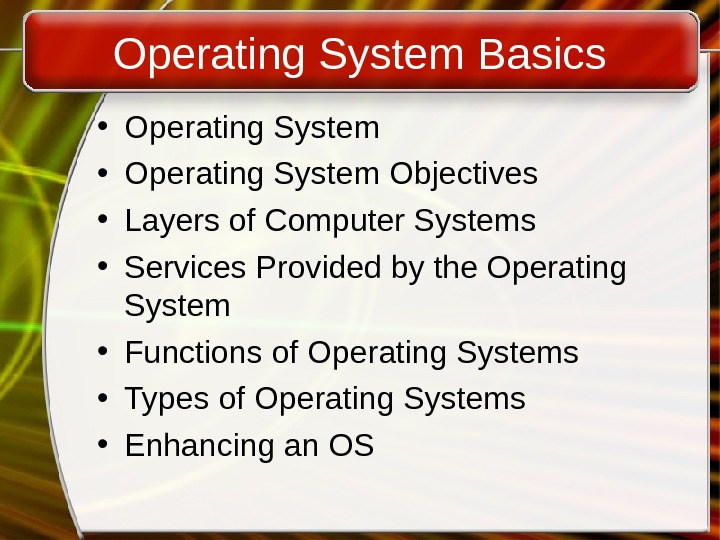


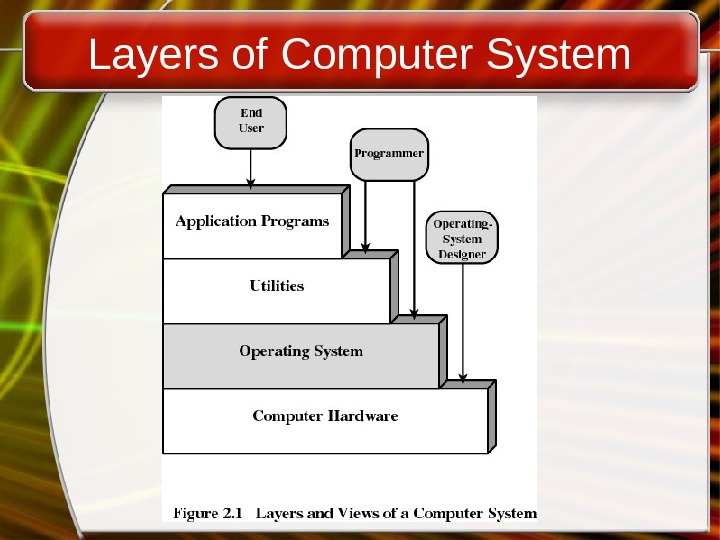
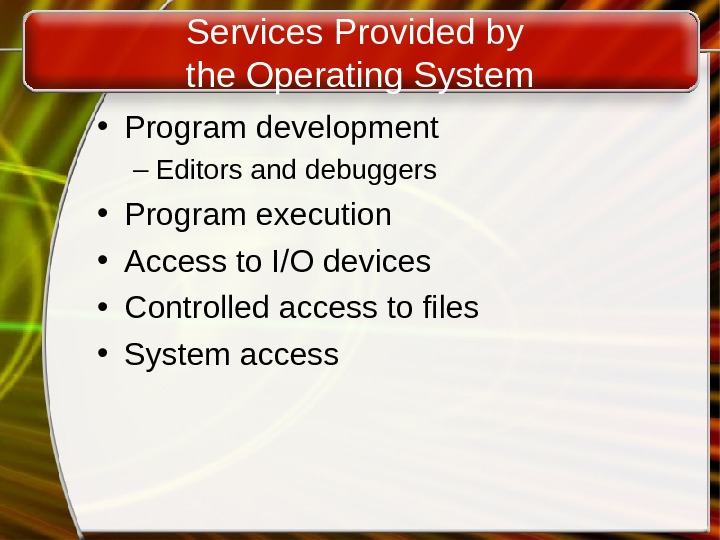

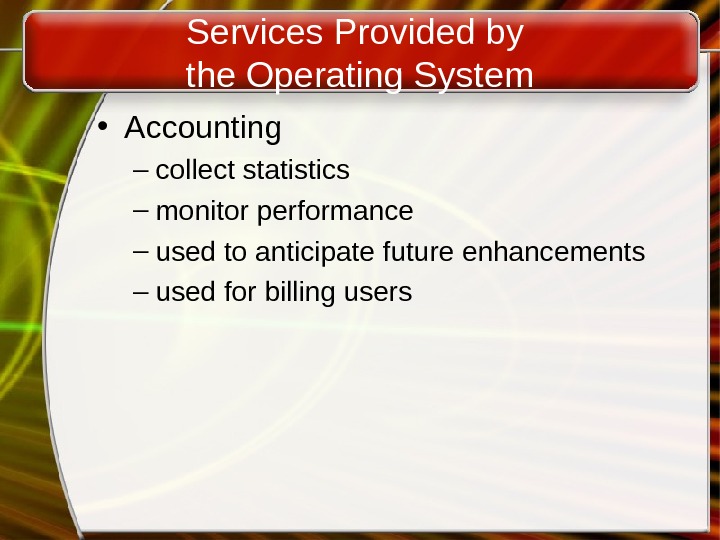
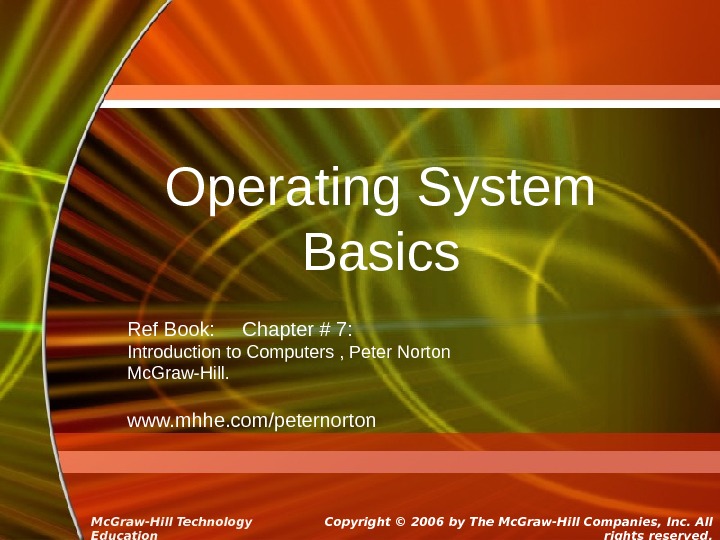



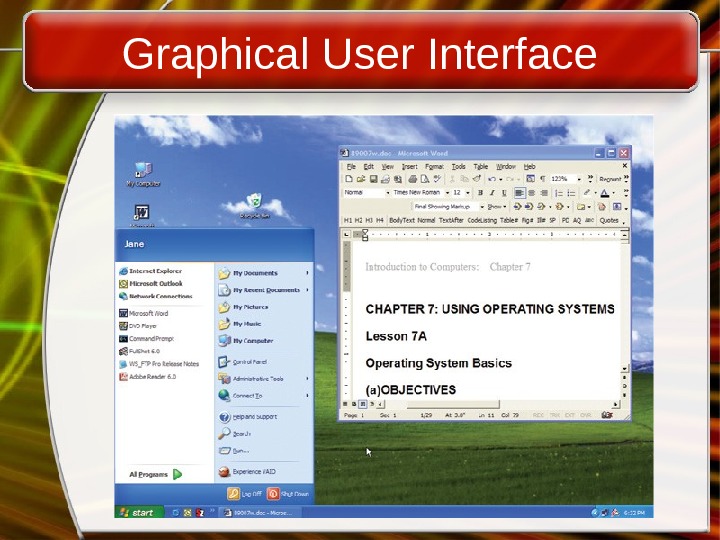

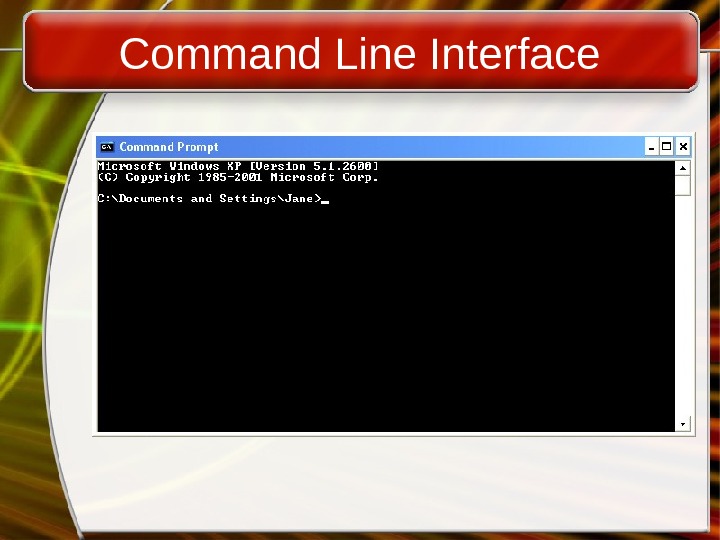

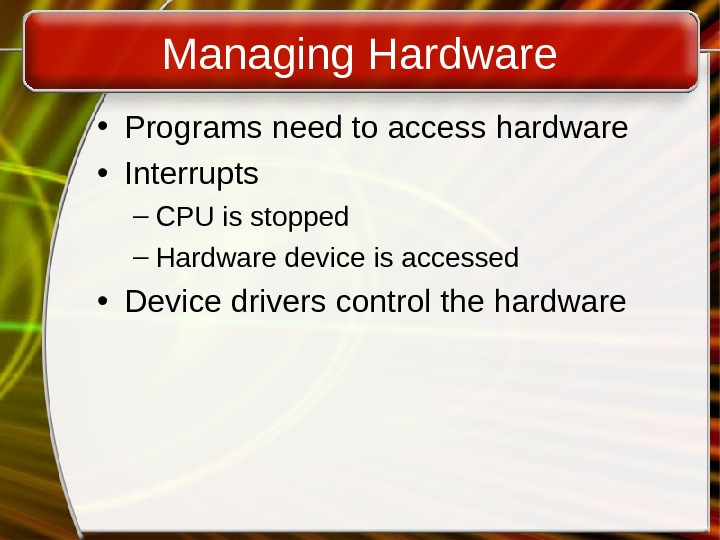
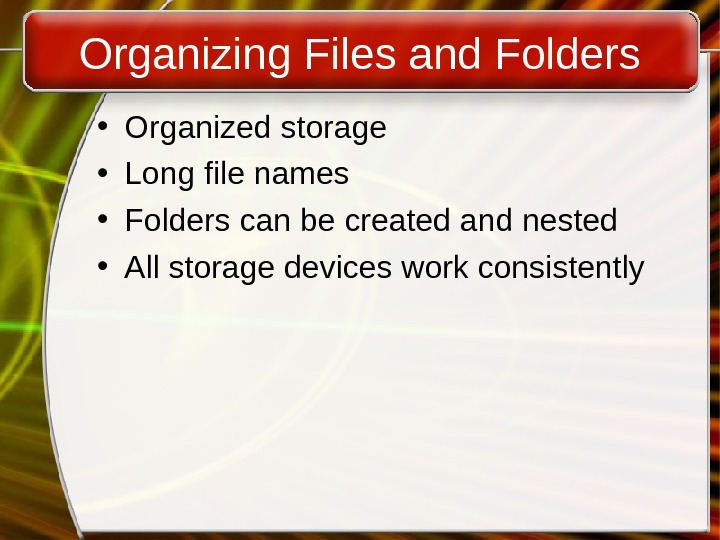
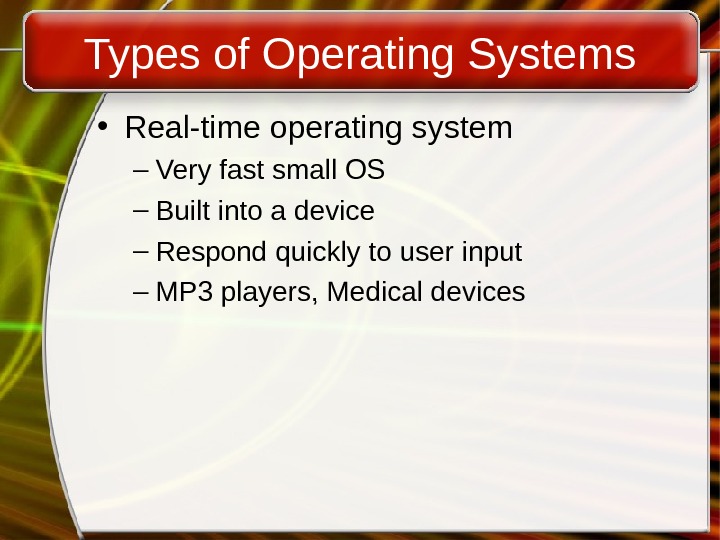


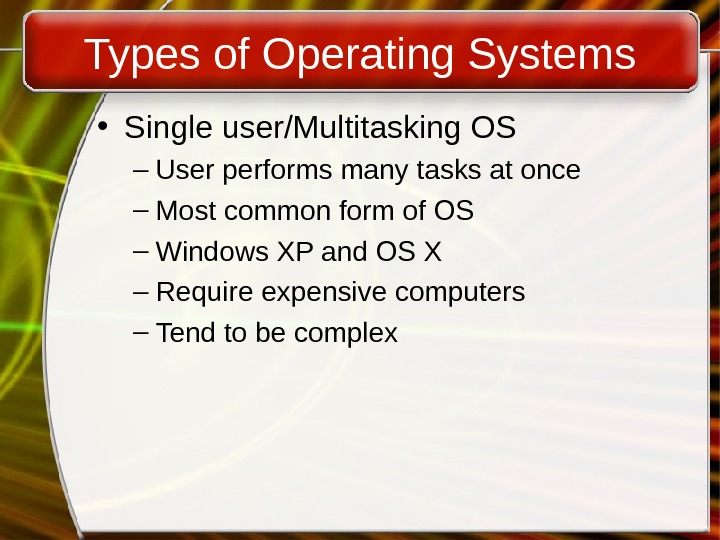


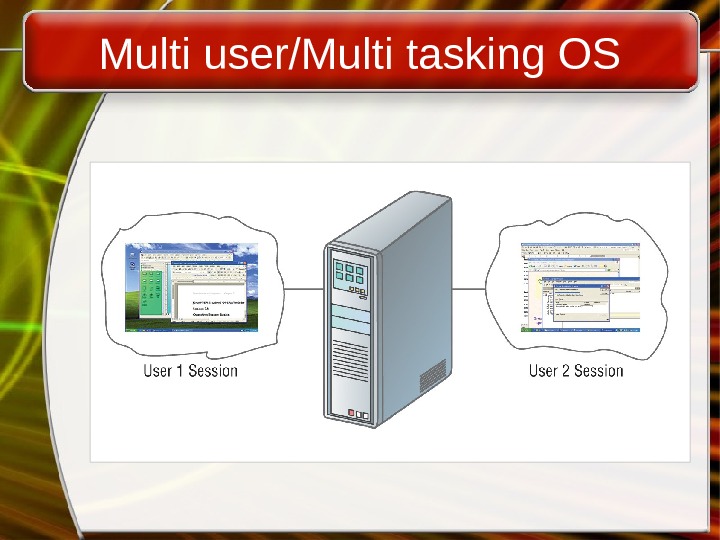
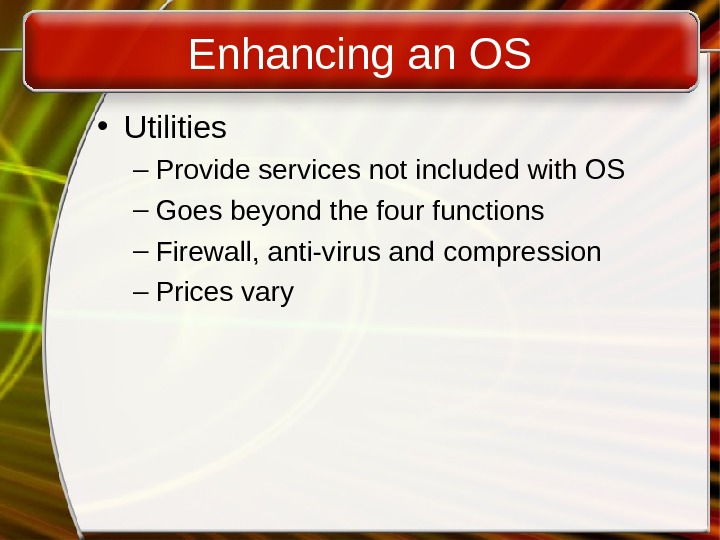


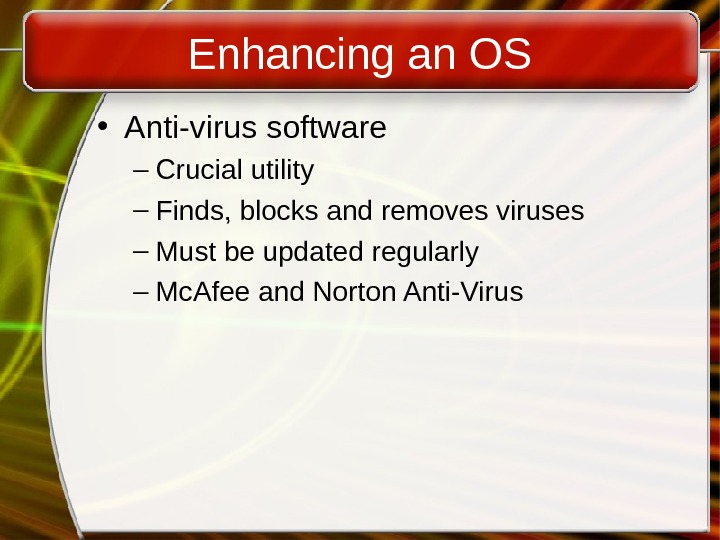
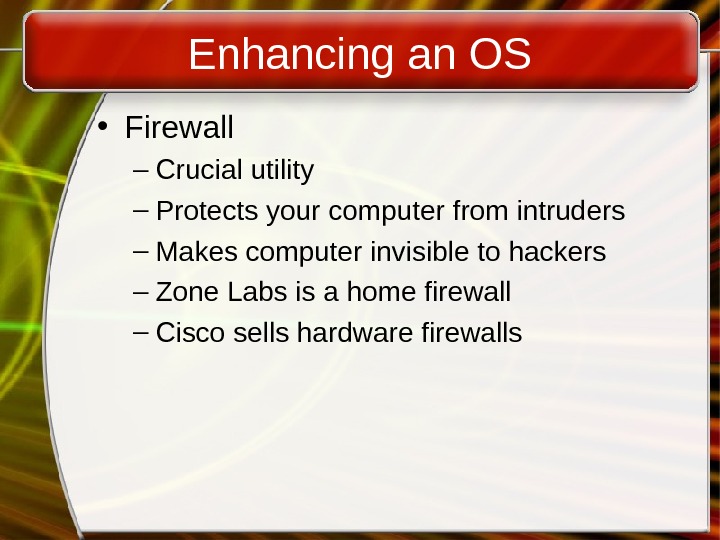

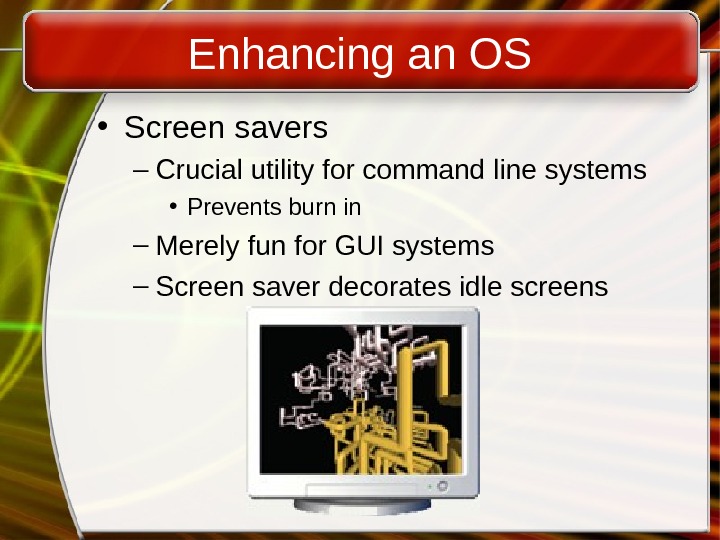

- Размер: 824.5 Кб
- Количество слайдов: 33
Описание презентации Copyright © 2006 by The Mc. Graw-Hill по слайдам
 Copyright © 2006 by The Mc. Graw-Hill Companies, Inc. All rights reserved. Mc. Graw-Hill Technology Education Introduction to Computer Administration
Copyright © 2006 by The Mc. Graw-Hill Companies, Inc. All rights reserved. Mc. Graw-Hill Technology Education Introduction to Computer Administration
 Operating System Basics • Operating System Objectives • Layers of Computer Systems • Services Provided by the Operating System • Functions of Operating Systems • Types of Operating Systems • Enhancing an OS
Operating System Basics • Operating System Objectives • Layers of Computer Systems • Services Provided by the Operating System • Functions of Operating Systems • Types of Operating Systems • Enhancing an OS
 Operating System • A program that controls the execution of application programs • An interface between applications and hardware
Operating System • A program that controls the execution of application programs • An interface between applications and hardware
 Operating System Objectives • Convenience – Makes the computer more convenient to use • Efficiency – Allows computer system resources to be used in an efficient manner • Ability to evolve – Permit effective development, testing, and introduction of new system functions without interfering with service
Operating System Objectives • Convenience – Makes the computer more convenient to use • Efficiency – Allows computer system resources to be used in an efficient manner • Ability to evolve – Permit effective development, testing, and introduction of new system functions without interfering with service
 Layers of Computer System
Layers of Computer System
 Services Provided by the Operating System • Program development – Editors and debuggers • Program execution • Access to I/O devices • Controlled access to files • System access
Services Provided by the Operating System • Program development – Editors and debuggers • Program execution • Access to I/O devices • Controlled access to files • System access
 Services Provided by the Operating System • Error detection and response – internal and external hardware errors • memory error • device failure – software errors • arithmetic overflow • access forbidden memory locations – operating system cannot grant request of application
Services Provided by the Operating System • Error detection and response – internal and external hardware errors • memory error • device failure – software errors • arithmetic overflow • access forbidden memory locations – operating system cannot grant request of application
 Services Provided by the Operating System • Accounting – collect statistics – monitor performance – used to anticipate future enhancements – used for billing users
Services Provided by the Operating System • Accounting – collect statistics – monitor performance – used to anticipate future enhancements – used for billing users
 Copyright © 2006 by The Mc. Graw-Hill Companies, Inc. All rights reserved. Mc. Graw-Hill Technology Education Operating System Basics Ref Book: Chapter # 7: Introduction to Computers , Peter Norton Mc. Graw-Hill. www. mhhe. com/peternorton
Copyright © 2006 by The Mc. Graw-Hill Companies, Inc. All rights reserved. Mc. Graw-Hill Technology Education Operating System Basics Ref Book: Chapter # 7: Introduction to Computers , Peter Norton Mc. Graw-Hill. www. mhhe. com/peternorton
 7 A- 10 Functions of Operating Systems • Provide a user interface • Run programs • Manage hardware devices • Organized file storage
7 A- 10 Functions of Operating Systems • Provide a user interface • Run programs • Manage hardware devices • Organized file storage
 Providing a User Interface • User interface – How a user interacts with a computer – Require different skill sets
Providing a User Interface • User interface – How a user interacts with a computer – Require different skill sets
 Providing a User Interface • Graphical user interface (GUI) – Most common interface • Windows, OS X, Gnome, KDE – Uses a mouse to control objects – Uses a desktop metaphor – Shortcuts open programs or documents – Open documents have additional objects – Task switching – Dialog boxes allow directed input
Providing a User Interface • Graphical user interface (GUI) – Most common interface • Windows, OS X, Gnome, KDE – Uses a mouse to control objects – Uses a desktop metaphor – Shortcuts open programs or documents – Open documents have additional objects – Task switching – Dialog boxes allow directed input
 Graphical User Interface
Graphical User Interface
 Providing a User Interface • Command line interfaces – Older interface • DOS, Linux, UNIX – User types commands at a prompt – User must remember all commands – Included in all GUIs
Providing a User Interface • Command line interfaces – Older interface • DOS, Linux, UNIX – User types commands at a prompt – User must remember all commands – Included in all GUIs
 Command Line Interface
Command Line Interface
 Running Programs • Many different applications supported • System call – Provides consistent access to OS features • Share information between programs – Copy and paste – Object Linking and Embedding
Running Programs • Many different applications supported • System call – Provides consistent access to OS features • Share information between programs – Copy and paste – Object Linking and Embedding
 Managing Hardware • Programs need to access hardware • Interrupts – CPU is stopped – Hardware device is accessed • Device drivers control the hardware
Managing Hardware • Programs need to access hardware • Interrupts – CPU is stopped – Hardware device is accessed • Device drivers control the hardware
 Organizing Files and Folders • Organized storage • Long file names • Folders can be created and nested • All storage devices work consistently
Organizing Files and Folders • Organized storage • Long file names • Folders can be created and nested • All storage devices work consistently
 Types of Operating Systems • Real-time operating system – Very fast small OS – Built into a device – Respond quickly to user input – MP 3 players, Medical devices
Types of Operating Systems • Real-time operating system – Very fast small OS – Built into a device – Respond quickly to user input – MP 3 players, Medical devices
 Types of Operating Systems • Single user/Single tasking OS – One user works on the system – Performs one task at a time – MS-DOS and Palm OS – Take up little space on disk – Run on inexpensive computers
Types of Operating Systems • Single user/Single tasking OS – One user works on the system – Performs one task at a time – MS-DOS and Palm OS – Take up little space on disk – Run on inexpensive computers
 Single Tasking • Operating System cannot be able to take control back from the running process/task/application • In case if a process call an I/O Instruction then Processor must wait for I/O instruction to complete before preceding
Single Tasking • Operating System cannot be able to take control back from the running process/task/application • In case if a process call an I/O Instruction then Processor must wait for I/O instruction to complete before preceding
 Types of Operating Systems • Single user/Multitasking OS – User performs many tasks at once – Most common form of OS – Windows XP and OS X – Require expensive computers – Tend to be complex
Types of Operating Systems • Single user/Multitasking OS – User performs many tasks at once – Most common form of OS – Windows XP and OS X – Require expensive computers – Tend to be complex
 Multitasking • Operating System can take control back from the running process and can give it to other. • When one job needs to wait for I/O, the processor can switch to the other job
Multitasking • Operating System can take control back from the running process and can give it to other. • When one job needs to wait for I/O, the processor can switch to the other job
 Types of Operating Systems • Multi user/Multitasking OS – Many users connect to one computer – Each user has a unique session – UNIX, Linux, and VMS – Maintenance can be easy – Requires a powerful computer
Types of Operating Systems • Multi user/Multitasking OS – Many users connect to one computer – Each user has a unique session – UNIX, Linux, and VMS – Maintenance can be easy – Requires a powerful computer
 Multi user/Multi tasking OS
Multi user/Multi tasking OS
 Enhancing an OS • Utilities – Provide services not included with OS – Goes beyond the four functions – Firewall, anti-virus and compression – Prices vary
Enhancing an OS • Utilities – Provide services not included with OS – Goes beyond the four functions – Firewall, anti-virus and compression – Prices vary
 Enhancing an OS • Backup software – Archives files onto removable media – Ensures data integrity – Most OS include a backup package – Many third party packages exist
Enhancing an OS • Backup software – Archives files onto removable media – Ensures data integrity – Most OS include a backup package – Many third party packages exist
 Backup Software
Backup Software
 Enhancing an OS • Anti-virus software – Crucial utility – Finds, blocks and removes viruses – Must be updated regularly – Mc. Afee and Norton Anti-Virus
Enhancing an OS • Anti-virus software – Crucial utility – Finds, blocks and removes viruses – Must be updated regularly – Mc. Afee and Norton Anti-Virus
 Enhancing an OS • Firewall – Crucial utility – Protects your computer from intruders – Makes computer invisible to hackers – Zone Labs is a home firewall – Cisco sells hardware firewalls
Enhancing an OS • Firewall – Crucial utility – Protects your computer from intruders – Makes computer invisible to hackers – Zone Labs is a home firewall – Cisco sells hardware firewalls
 Enhancing an OS • Intrusion detection – Often part of a firewall package – Announces attempts to breach security – Snort is a Linux based package
Enhancing an OS • Intrusion detection – Often part of a firewall package – Announces attempts to breach security – Snort is a Linux based package
 Enhancing an OS • Screen savers – Crucial utility for command line systems • Prevents burn in – Merely fun for GUI systems – Screen saver decorates idle screens
Enhancing an OS • Screen savers – Crucial utility for command line systems • Prevents burn in – Merely fun for GUI systems – Screen saver decorates idle screens
 Copyright © 2006 by The Mc. Graw-Hill Companies, Inc. All rights reserved. Mc. Graw-Hill Technology Education Reference Book: Introduction to Computers , Peter Norton Mc. Graw-Hill. www. mhhe. com/peternorton
Copyright © 2006 by The Mc. Graw-Hill Companies, Inc. All rights reserved. Mc. Graw-Hill Technology Education Reference Book: Introduction to Computers , Peter Norton Mc. Graw-Hill. www. mhhe. com/peternorton

